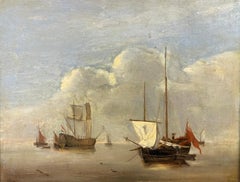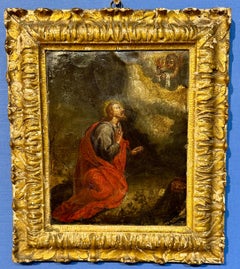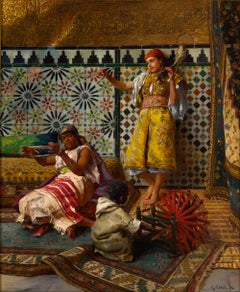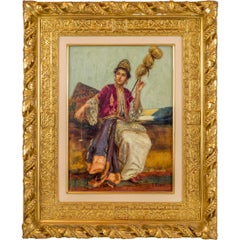Rudolf Ernst Art
Rudolf Ernst had a lifelong fascination with Islamic and Moorish art, which informed his richly colored orientalist paintings. These demonstrate the Austrian artist’s extraordinary attention to detail and his mastery of texture and form.
Ernst was born in 1854 in Vienna. His father, Leopold Ernst, was a painter and architect. Encouraged by his father to pursue his interest in the arts, Ernst entered the Academy of Fine Arts at age 15. There, he studied academic art under Austrian painter and muralist August Eisenmenger and German classicist painter Anselm Feuerbach.
In 1874, Ernst left the Academy to study the Old Masters in Rome. After two years in Italy, he moved to Paris, where he met Turkish painter Osman Hamdi Bey, who inspired him to paint orientalist subjects.
In the following years, Ernst traveled extensively throughout Turkey, Morocco, Egypt and Moorish Spain, where he was enamored with Islamic art and culture. By 1885, his oeuvre consisted mainly of orientalist themes. Ernst’s favorite subjects included the harem — as shown in his figurative painting Spinning Yarn in the Harem (1886) — Hindu temples, Nubian guards and scenes of Islamic daily life, such as his watercolor portrait Man Smoking in Doorway.
In 1890, Ernst was introduced to the art of ceramic tile decorating while visiting Constantinople (today’s Istanbul). Back in Paris, he continued learning about ceramic art from ceramicist and glassmaker Léon Fargue. During his later years, Ernst constructed a ceramic studio where he made orientalist faience tiles. He also continued painting resplendent Eastern scenes from his Ottoman-style studio, often wearing a tarboosh hat while he worked.
Ernst participated in several notable exhibitions, including the Exposition Universelle held in Paris in 1889 and 1900. He won a bronze medal at the 1889 Exposition. He died in 1932.
Today, Ernst’s paintings can be found in the collections of the Fine Arts Museums of San Francisco and the Dahesh Museum of Art in New York City.
On 1stDibs, discover a range of Rudolf Ernst’s paintings.
19th Century Academic Rudolf Ernst Art
Oil, Panel
1890s Old Masters Rudolf Ernst Art
Oil, Wood Panel
18th Century Old Masters Rudolf Ernst Art
Oil, Wood Panel
1650s Old Masters Rudolf Ernst Art
Copper
19th Century Old Masters Rudolf Ernst Art
Oil
17th Century Old Masters Rudolf Ernst Art
Panel, Oil
1760s Old Masters Rudolf Ernst Art
Oil, Wood Panel
1850s Old Masters Rudolf Ernst Art
Oil
17th Century Old Masters Rudolf Ernst Art
Canvas, Oil
1810s Old Masters Rudolf Ernst Art
Oil, Wood Panel
17th Century Old Masters Rudolf Ernst Art
Oil
17th Century Old Masters Rudolf Ernst Art
Oil, Wood Panel
Early 1800s Old Masters Rudolf Ernst Art
Canvas, Oil
19th Century Old Masters Rudolf Ernst Art
Oil
19th Century Academic Rudolf Ernst Art
Oil, Panel
1890s Rudolf Ernst Art
Oil, Panel
Late 19th Century Rudolf Ernst Art
Oil, Panel
Late 19th Century Victorian Rudolf Ernst Art
Canvas, Oil




